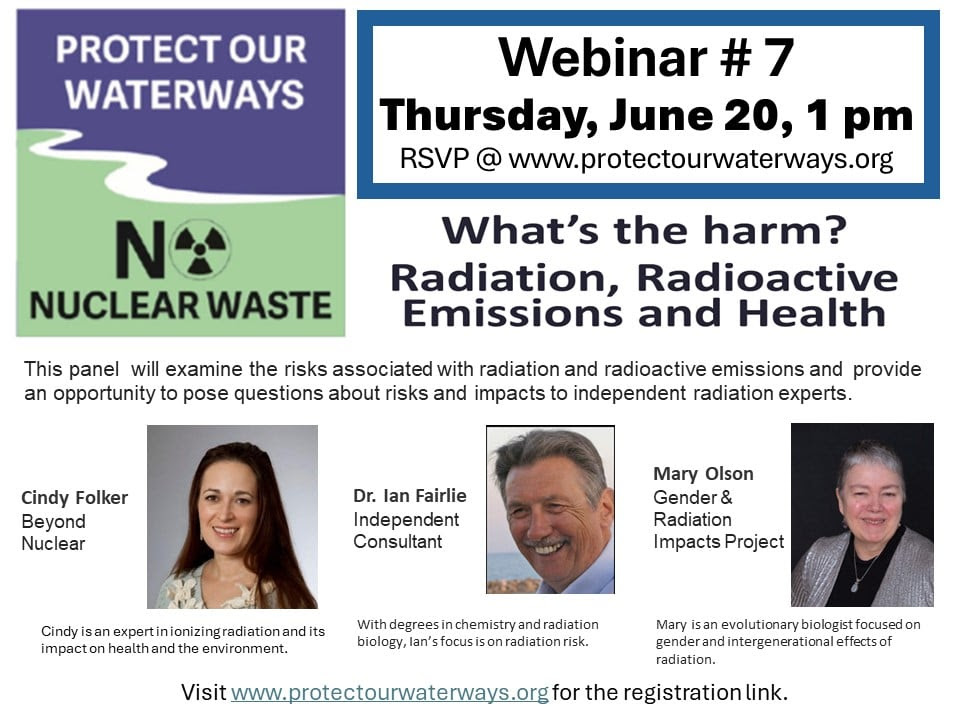New York congressman questions impact of climate change on nuclear facilities
 NY congressman questions impact of climate change on nuclear facilities https://www.snl.com/Interactivex/article.aspx?CdId=A-33809939-10283 By Matthew Bandyk, 9 Sept 16
NY congressman questions impact of climate change on nuclear facilities https://www.snl.com/Interactivex/article.aspx?CdId=A-33809939-10283 By Matthew Bandyk, 9 Sept 16
Citing a recent incident at Entergy Corp.‘s Pilgrim plant in Massachusetts, Tonko questioned the four members of the U.S. Nuclear Regulatory Commission about what should be done about this potential problem as they testified at a Sept. 9 hearing held by the committee’s Energy and Power and Environment and the Economy subcommittees.Rising water temperatures caused by climate change could force more nuclear plants to shut down, Rep. Paul Tonko, D-N.Y., said during a hearing by two subcommittees of the House Energy and Commerce Committee.
 On one day this August, the Pilgrim plant had to cut power by 10% as the water the facility pulls in from Cape Cod Bay for cooling hit 75.09 degrees, only the fourth time in the plant’s history that intake water exceeded the NRC’s 75-degree limit, The Boston Globe reported Aug. 11. The other three times all occurred in the summer of 2013.
On one day this August, the Pilgrim plant had to cut power by 10% as the water the facility pulls in from Cape Cod Bay for cooling hit 75.09 degrees, only the fourth time in the plant’s history that intake water exceeded the NRC’s 75-degree limit, The Boston Globe reported Aug. 11. The other three times all occurred in the summer of 2013.
A scientist at the Gulf of Maine Research Institute told the newspaper that Cape Cod Bay has been getting demonstrably warmer over time and that nuclear plants should consider modifying their intake pipes in response. But Entergy said the hot temperatures that day were an unusual, specific incident caused by winds and tides.
Tonko pointed to National Oceanic and Atmospheric Administration data that found that 2014 was the hottest year on record, and noted that the August Pilgrim incident was not the first time a plant had to be curtailed due to excessive water temperature.
“What is the NRC doing to ensure plants will have sufficient water to operate?” he asked the NRC commissioners.
Commissioner Jeff Baran said that while there have been several instances of cooling water getting too hot, the NRC evaluates those on a case-by-case basis.
As for whether or not there is a recurring issue caused by climate change, “I don’t know if we have looked at any particular trend,” NRC Chairman Stephen Burns told Tonko.
“The NRC doesn’t have any studies or rulemaking processes under way that would look explicitly at the effect of climate change on plant operations,” NRC spokesman Neil Sheehan said in an email after the hearing.
In 2014, the NRC signed off on a request from Dominion Resources Inc.‘s Millstone nuclear plant in Connecticut to allow it to draw water up to 80 degrees instead of 75. Entergy, however, has not yet asked the NRC for a license amendment request to change its temperature limit.
The NRC recently stepped up its oversight of the Pilgrim plant in response to several unplanned shutdowns at the facility. The shutdown that most grabbed the agency’s attention, however, had nothing to do with high temperatures. After a winter storm in January triggered a shutdown, the NRC found that some backup functions required to depressurize the reactor in case of an unplanned shutdown were not operational at the time of the storm, and that Entergy failed to fix a safety relief valve needed for depressurization.
The NRC regulates the water intake temperature at nuclear plants because high temperatures can hurt the efficiency of a plant’s condenser, which uses water to cool down steam produced by the reactor to turn the plant’s turbine, according to Sheehan. Cooling water is also used for heat exchangers that help key plant systems like emergency diesel generators and the spent fuel pool operate, so there is also a safety element, he said.
No comments yet.
-
Archives
- June 2024 (181)
- May 2024 (373)
- April 2024 (366)
- March 2024 (335)
- February 2024 (345)
- January 2024 (374)
- December 2023 (333)
- November 2023 (342)
- October 2023 (366)
- September 2023 (353)
- August 2023 (356)
- July 2023 (362)
-
Categories
- 1
- 1 NUCLEAR ISSUES
- business and costs
- climate change
- culture and arts
- ENERGY
- environment
- health
- history
- indigenous issues
- Legal
- marketing of nuclear
- media
- opposition to nuclear
- PERSONAL STORIES
- politics
- politics international
- Religion and ethics
- safety
- secrets,lies and civil liberties
- spinbuster
- technology
- Uranium
- wastes
- weapons and war
- Women
- 2 WORLD
- ACTION
- AFRICA
- Atrocities
- AUSTRALIA
- Christina's notes
- Christina's themes
- culture and arts
- Fuk 2022
- Fuk 2023
- Fukushima 2017
- Fukushima 2018
- fukushima 2019
- Fukushima 2020
- Fukushima 2021
- general
- global warming
- Humour (God we need it)
- Nuclear
- RARE EARTHS
- Reference
- resources – print
- Resources -audiovicual
- World
- World Nuclear
- YouTube
-
RSS
Entries RSS
Comments RSS


Leave a comment